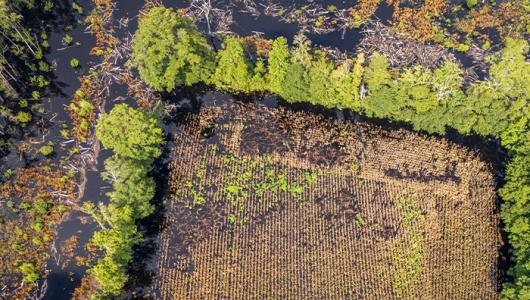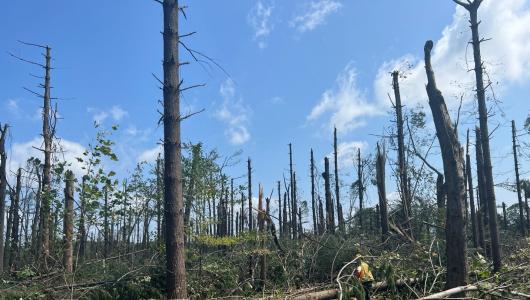Out West, wildfires and weeds are closely linked. The spread of invasive grasses is leading to more frequent and intense wildfires. These invasive grasses degrade the health of native rangelands, which threatens both wildlife and rural ways of life.
An estimated 100 million acres of land – both public and private – have some degree of infestation by invasive grasses, such as cheatgrass, medusahead rye and others. In the Great Basin, cheatgrass dominates up to 70 million acres.
Ranchers, land managers, nonprofits and government agencies are working together to combat invasives. And for ranchers, a number of options are available for fighting their spread on your land.
Here is what you should know about invasives and how to combat them:
1. Cheatgrass is highly flammable, and it’s altering the fire cycle in the West. It uses a “get rich fast” approach of shallow roots, focusing efforts on producing seeds. After a fire, cheatgrass can out compete native plants like sagebrush, which greatly impacts the ecosystem.
Cheatgrass is native to the Eurasian steppe and has now become one of the dominant grasses across much of the West.
2. Emerging studies show that fighting invasive grasses — while expensive — saves money in the long run for ranchers. Through treatment, native plants can rebound, which provide higher-value forage for livestock. The best return on investment for ranchers is to remove invasives early.
Knowing when to treat and the costs and benefits involved is key to making decisions for your land.
3. When ranchers graze sustainably, they promote deep-rooted perennials, revegetate disturbed areas, and combat invasives. Ranchers can remove invasives and use prescribed grazing (rotating livestock amid pastures to prevent overgrazing) to improve the health of rangelands and value of forage to livestock.
Promoting healthy and diverse native plant communities with strong root systems provides a buffer against these threats.
4. USDA’s Natural Resources Conservation Service offers technical and financial assistance to ranchers wanting to combat invasives and improve plant diversity on their land. Since 2010, NRCS has worked with ranchers to remove 2.1 million acres of invasive plants and implement prescribed grazing on 2 million acres as part of the Sage Grouse Initiative or SGI. Through SGI, NRCS helps ranchers keep working lands working while helping the greater sage-grouse and 350 other species that depend on the sagebrush landscape.
Wyoming rancher DeWitt Morris is setting an example for how to protect the sagebrush landscape from the threat of invasive weeds.
5. Invasive grasses know no boundaries. NRCS works closely with a network of partners to combat invasives as well as help recover fire-impacted landscapes on public and private lands.
In 2015, the Soda Fire burned over 280,000 acres, or more than 40-plus square miles, of sagebrush in Idaho and Oregon. The Bureau of Land Management, NRCS, ranchers and many other partners are working together to restore the landscape.
If you are interested in combating invasive and managing for diverse, native plants on your land, visit your local USDA service center.


